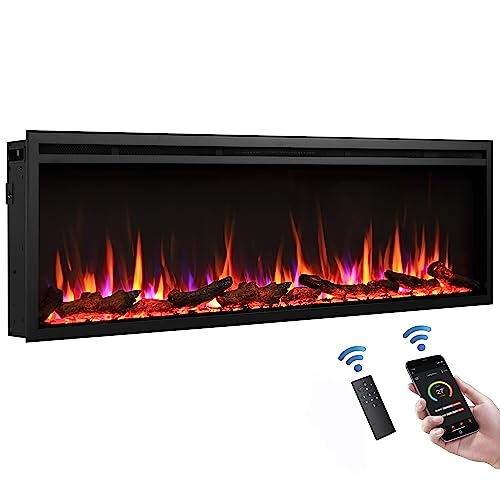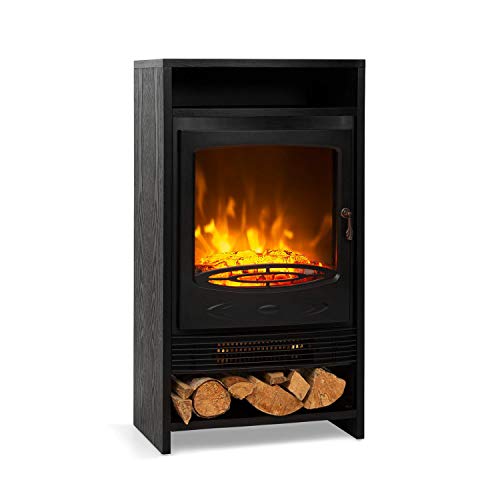Choosing a Fireplace Surround
If you are using a fireplace for aesthetics or warmth, choosing the perfect surround can give your living room personality. It can be difficult to pick a fireplace surround that is both safe and compliant with the code.

The custom-built surrounds are constructed from non-combustible material that adheres to the National Fire Code. They are a great addition to any style of home.
Simple Concrete Surround with Marble Slabs
A fireplace surround can be the focal point of rooms, and it can bring warmth and charm. It can be crafted using a range of materials and be designed to suit many different styles of design. It's important to consider the design of the room as well as the budget before deciding on a fireplace surround design.
Marble fireplace surrounds provide a sophisticated look that complements a variety of design styles. They can be combined with rustic woods and modern metals to create a unique, contemporary design. Marble is easy to maintain and can withstand high temperatures, making it a great choice for a surround.
Stone is a popular material for fireplace surrounds. It has a timeless appearance that can be found in a variety of homes. It can be carved or etched to create a modern look or left unfinished to give it a classic look. Stacked stone veneers are a popular option that can be used to add texture and depth to rooms.
Granite is a popular option for modern surrounds around
fireplaces electric. It's tough and able to withstand heat well. It's also available in a variety of colors and patterns, which means it can be used to create various styles of design. Quartzite can also be formed and shaped to match a modern surround.
Installing a concrete surround for a fireplace might be possible for DIYers. While it may seem daunting but it can be much easier than you think if you plan ahead and consult with a professional make sure the structure is strong enough.
A professional is also recommended when building a
marble fireplace surround, as it requires special attention to avoid damage. A carpenter with experience can help you avoid costly mistakes.
If you plan to use tiles as a fireplace surround, you must make sure it's rated for high temperatures. This information is typically found on the label, or you can inquire with an employee at an improvement store for.
Leaning Frame Surround
The fireplace's surround can transform an area. It is not only aesthetically appealing but also serves a practical purpose. It shields the wall surrounding the fireplace from deterioration and reflects heat back into the space. It's available in various materials and can be made to match any style or decor.
The right material to use for an inclined frame surround is crucial to create an aesthetic that is purposeful. Concrete is a great choice because it's durable and non-flammable. It also has a lot visual appeal due to its natural texture and color. It is usually poured in a mold to give you the possibility of making a unique shape.
Layers are important when creating your leaning frames. This helps the piece look curated and intentional instead of being randomly placed on the wall or shelf. If you intend to display heavy items such as vases or lamps on leaning frames, place a piece of lining for a drawer made of rubber beneath the base. This will stop them from sliding or damaging surfaces.
If you're using a concrete or marble surround, consider adding wooden boards on the bottom to hold it in the right place. It will also help to reduce the weight of the piece and prevent it from shifting while you sip a refreshing glass of wine or a cup of coffee in front of your mantel.

After you have chosen the material, it's time to construct the piece. Begin by marking the new wall with the dimensions of your surround and then use a saw to cut cleats on each of these points. Make sure that the cleat on the top of the shelf is at least one foot shorter.
Screw the brackets on the wall. Make sure the bolts go through the backer board, and into the wall stud. If necessary, pre-drill the screw holes. Then, you can temporarily secure the mantel to the backer board. Attach the mantel to the studs with the lag bolts (2-4 bolts per stud). Make sure the bolts are long and strong enough to cover the entire thickness of the backerboard plus 2/3 of the mantel's depth.
Black Firebox Surround
Fireplace surrounds serve as an aesthetic and functional function. They protect walls from heat damage and also help to redirect some of the heat back into the room, and can create a fireplace that is an eye-catching feature in a space. Metal and wood are the most commonly used materials used for fireplace surrounds. Metal surrounds are required by building code to protect nearby combustible materials or to enhance the appearance of a fireplace.
The fireplace in this modern living area has the black firebox surround, with white
marble fireplaces accents. The stone is a higher-end material that requires more maintenance than a mantel made of wood, however it provides a dramatic and striking design element to the room. The black finish also brings to the dark hues of the furniture and the wood flooring to create a cohesive appearance.
While you may think of concrete as sidewalks or driveways, it is actually a very versatile and attractive material for fireplace surrounds. It can be cut into custom shapes and poured in place, allowing for nearly limitless design options. The concrete surround was formed to a curved profile. It has a sleek and modern look that is in contrast to the darker hues of the brick
wall fireplace and flooring.
Wood is another popular choice for fireplace surrounds. It is available in many colors and textures that will match any decor scheme. Wooden surrounds are lighter and more economical than brick surrounds and can be finished to match the color of your existing hearth pad. Most wooden surrounds can be used to accommodate decorative items for the mantel, such as lamps and vases.
Some wood surrounds come with an ornamental faceplate that covers the top of the mantel and houses the doors to the fireplace. This plate can be fixed using decorative hinges or fasteners that can mimic the look of the look of wrought iron.
When choosing a mantel made of wood or a
fireplace inserts surround made of metal It is crucial to take into consideration the height of your chimney. To stop a fire from spreading to your home, building codes specify minimum clearances. This distance will vary depending on the type of fireplace, and can vary from country to country or from state to state.
Simple Wood Surround
If you want your fireplace to have a traditional wood look, there are kinds of surrounds that can be purchased. Some surrounds are made of solid oak while others are various materials like stone legs, paired with mantels made of oak or pine. You can also find oak or pine fireplace surrounds that are designed to be a low-cost and easy option.
Many people choose to purchase pre-made wood fireplace surrounds as it's an economical way to achieve the style they want without hiring carpenters. Certain pre-made pine fireplace surrounds are available in a range of different finishes to blend it with your existing decor.
A wood fire surround that is hand-crafted made from high quality oak is also popular. It can be stained to in a light oak hue or left untreated to ensure that the natural golden brown of wood shows through. The fireplace surround is suitable for wood or gas fires. It comes in two styles: flat or arched.
There are numerous tutorials online for those with more experience in DIY home improvement projects. They can help you build your own
fireplace surround from wood. This step-by-step tutorial from H2O Bungalow shows you how to make a rustic wood surround using pine.
The tutorial shows how to construct the horizontal part and then the vertical pilasters that support the mantel. When the columns or pilasters are finished then you can place your mantel. The tutorial will show you how to install the crown molding, which will fill in any gaps between the wall's cladding and the wall surrounding it.
It is essential to adhere to the local fire code when you install a wooden surround around a fireplace. It is recommended to keep the surround at least 6 inches from the edge of the opening. It is also important to use an adhesive that is non-flammable to secure the decorative molding, and to ensure that it stays in place after the surround is set.

 The custom-built surrounds are constructed from non-combustible material that adheres to the National Fire Code. They are a great addition to any style of home.
The custom-built surrounds are constructed from non-combustible material that adheres to the National Fire Code. They are a great addition to any style of home. After you have chosen the material, it's time to construct the piece. Begin by marking the new wall with the dimensions of your surround and then use a saw to cut cleats on each of these points. Make sure that the cleat on the top of the shelf is at least one foot shorter.
After you have chosen the material, it's time to construct the piece. Begin by marking the new wall with the dimensions of your surround and then use a saw to cut cleats on each of these points. Make sure that the cleat on the top of the shelf is at least one foot shorter.